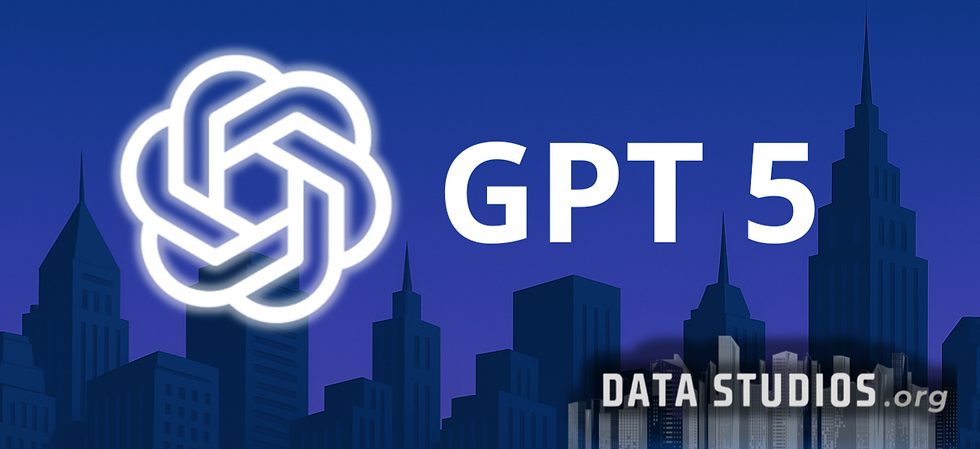GPT-5 vs. Previous Models: Complete Overview of OpenAI’s Upcoming Revolution
- Graziano Stefanelli
- Jun 14
- 3 min read

The world of artificial intelligence has been spellbound by each successive release in OpenAI’s GPT series, and now all eyes are on GPT-5. Slated to arrive in late 2025, this model is touted as the culmination of years of research into language understanding, multimodal reasoning, and autonomous problem-solving. Early reports suggest it will bring together the strengths of prior specialized models under one roof, dramatically simplifying how businesses and individuals interact with AI.
A Brief Retrospective
In the wake of GPT-4’s debut in 2023, OpenAI introduced intermediate “o-series” models—o1, o3 and the more recent o4-mini—to experiment with chain-of-thought reasoning and efficiency improvements. Sam Altman’s public roadmap indicated that GPT-4.5 (codenamed Orion) would serve as the last non-chain-of-thought update before the big leap to GPT-5. This phased approach allowed the team to refine deep reasoning without overhauling the entire architecture at once.
The Vision Behind GPT-5
Rather than maintaining a fragmented suite of models tailored to distinct tasks, OpenAI envisions GPT-5 as a single, unified engine. The goal is to eliminate the tedious process of switching between a code-specialist, an image-generator, or a logical-reasoning module—GPT-5 will automatically select the right internal components to handle any user prompt. This ambition to “end model overgrowth” stems from feedback that too many choices can overwhelm end users.

Core Innovations
1. Unified AI Architecture
GPT-5’s foundational breakthrough lies in its integrated design. Under the hood, it blends the most powerful elements of GPT-4, the o-series, Codex, and other specialized sub-models. By centralizing these capabilities, the system dynamically allocates resources—switching seamlessly from code synthesis to creative writing—without exposing the complexity to the user.
2. Advanced Reasoning and Chain-of-Thought
Building on the strengths of o3’s simulated reasoning, GPT-5 will offer deeper, multi-step logical deductions. Whether you’re tackling a complex algorithmic challenge or drafting a strategic business memo, the model can trace its own thought process, making its conclusions more transparent and its error-checking more robust. This marks a stark improvement over GPT-4’s more surface-level responses.
3. Multimodal Mastery
While GPT-4 introduced image and basic audio handling, GPT-5 promises true multimodal fluency across text, images, audio clips, and even video snippets. Imagine uploading a short video and asking for a scene-by-scene breakdown, or conversing with the model using voice input that it can reply to with both spoken words and on-screen graphics. This richness opens doors for entirely new use cases in education, entertainment, and design.
4. Persistent Memory and Personalization
A standout feature of GPT-5 will be its built-in long-term memory, allowing it to recall user preferences, past conversations, and specific project contexts across sessions. Instead of retracing your steps each time, the model will adapt to your individual style and priorities—think of it as a truly personal AI assistant that grows more attuned to your needs over time.
5. Massive Context Window
Thanks to architectural optimizations, GPT-5 is expected to handle context windows exceeding one million tokens. That means it can ingest entire books, lengthy legal briefs, or complex data tables in a single pass, maintaining coherence and continuity without chopping off earlier information. For researchers and professionals working with voluminous text, this is nothing short of revolutionary.
6. Agentic Autonomy
Beyond static responses, GPT-5 will act as an autonomous agent capable of executing multi-step tasks—scheduling meetings, drafting and sending emails, hunting down data, and even interacting with third-party APIs. Its built-in suite of tools will let it switch from “assistant mode” to “operator mode,” taking direct action on behalf of the user within defined safety boundaries.
Release Timeline and Development Journey
Originally slated for mid-2024, GPT-5 encountered technical hurdles and skyrocketing demand that prompted OpenAI to adjust its roadmap. Recent updates now target a Q3 2025 release (July–September), giving the team ample time to stress-test the model’s stability and safety protocols. This delay underscores the sheer scale of the engineering challenge—balancing cutting-edge capabilities with reliable performance under real-world loads.
Interim Milestones: o3 and o4-mini
To bridge the gap, OpenAI has rolled out o3 and o4-mini as stopgap models. o3 emphasizes deep chain-of-thought reasoning, while o4-mini focuses on lightweight, high-throughput applications for users with tighter compute budgets. Both serve as proving grounds for features destined for GPT-5, allowing OpenAI to iterate quickly without waiting for the full model’s launch.
Access, Pricing, and Tiers
When GPT-5 arrives, it will span multiple subscription levels. A free tier will grant “standard intelligence” access, covering most everyday tasks. Paid Plus and Pro plans will unlock the model’s advanced toolset—agentic autonomy, extended memory, and the largest context windows—at prioritized speeds. OpenAI also plans an open-source, research-grade variant to foster academic innovation.
__________
FOLLOW US FOR MORE.
DATA STUDIOS




